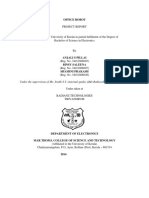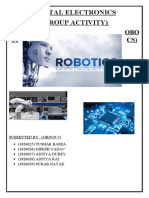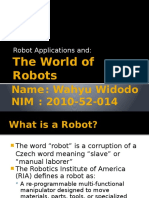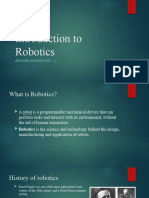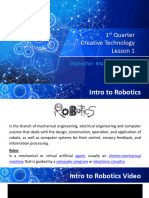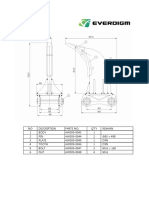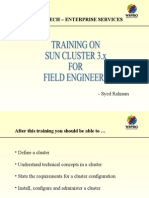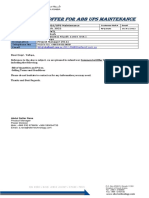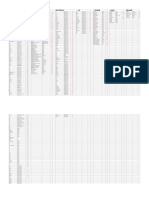0% found this document useful (0 votes)
35 views58 pagesUnit 02 Robots
The document discusses the emerging robotics industry and how it is developing similarly to how the computer industry developed decades ago. It predicts that robotic devices will become ubiquitous in daily life as technologies like distributed computing, voice recognition, and wireless connectivity enable robots to perform physical tasks on our behalf. The document also outlines some of the challenges still facing the robotics industry like a lack of common standards and difficulties with environmental sensing and object manipulation that researchers are working to solve.
Uploaded by
victorwen0208Copyright
© © All Rights Reserved
We take content rights seriously. If you suspect this is your content, claim it here.
Available Formats
Download as PPTX, PDF, TXT or read online on Scribd
0% found this document useful (0 votes)
35 views58 pagesUnit 02 Robots
The document discusses the emerging robotics industry and how it is developing similarly to how the computer industry developed decades ago. It predicts that robotic devices will become ubiquitous in daily life as technologies like distributed computing, voice recognition, and wireless connectivity enable robots to perform physical tasks on our behalf. The document also outlines some of the challenges still facing the robotics industry like a lack of common standards and difficulties with environmental sensing and object manipulation that researchers are working to solve.
Uploaded by
victorwen0208Copyright
© © All Rights Reserved
We take content rights seriously. If you suspect this is your content, claim it here.
Available Formats
Download as PPTX, PDF, TXT or read online on Scribd
/ 58




























